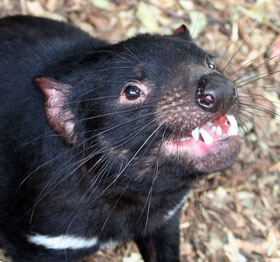Mainland Forgotten Fauna: Part 4 – Remembering the last Dingo at Mt Richmond… and, why did the fox run rampant?
We’ve now reached a point in this series where the stories told so far intertwine.
The undeniable reality is that, without realising it, the early settlers had paved the way for the establishment and explosion of the fox population – by deliberately persecuting, suppressing and, successfully eradicating from many districts, the only direct competition that was left on the mainland within the food chain for a species like the fox – and that is the Dingo – remembering that the Thylacine and Devil were no longer present after being out-competed by the Dingo before the arrival of Europeans.
With this in mind, is it possible that the timing of foxes becoming ubiquitous is more than a mere co-incidence?
After reading Part 2 of the story, a local historian of the Portland district, Garry Kerr, generously shared a fascinating personal account of “the last dingo” in the district, passed down to him by his grandfather. In Garry’s words, it goes like this:
“Regarding my Grandfather William (Bill) Doyle. His father had Caton’s Flat three miles west of Heywood, as well as land on Cape Bridgewater. They ran sheep in the Cobbobonee Forest but they had to be yarded nightly because of dingoes. This would have been about 1892. I understand it to be about the mid 1890s that the dingoes were finally eradicated. According to Grandfather it was either one of the Kennedys or one of the Kittsons who rode the last dingo down on horseback and belted it over the head with a stirrup iron on the west side of Mount Richmond.”
Thanks to people like Garry keeping this oral history alive, fragments of critical memories like this do remain today – crucial for maintaining a sense of what this landscape was really like, before the majority of our collective social memory now begins.
So having come up with a plausible explanation for the mechanics of how the demise of the dingo and rise of the fox are linked, are you – like me – curious why foxes didn’t also establish in Tasmania, when there are early accounts of releases of the species there?:
“there are several reports of foxes being introduced to the island during the 19th and 20th centuries. The earliest is attributed to John Woodcock Graves who brought foxes to the colony as early as 1833…” but “…foxes never established wild populations”.
This raises some interesting questions like:
- Was it just a numbers game, and the fact that sufficient numbers of foxes were never released, noting that it apparently took some time for deliberate releases in Victoria to be successful?
- Or, could it be that the island’s apex marpusial predators that were extinct on the mainland, in particular Devils which have been present throughout all of European settlement in Tasmania, offered greater natural resistance to the incursion and establishment of foxes?
We might get a chance to re-think these questions later on, but for now perhaps we should consider how long it has been since the Thylacine and Devil did occur on the mainland, and how the mammal fauna and habitats either side of Bass Straight compared before European settlement… In short, we need to find out – just how “unique” is the Tasmanian fauna we think of in those terms today?
Tune in for Part 5 to find out!


